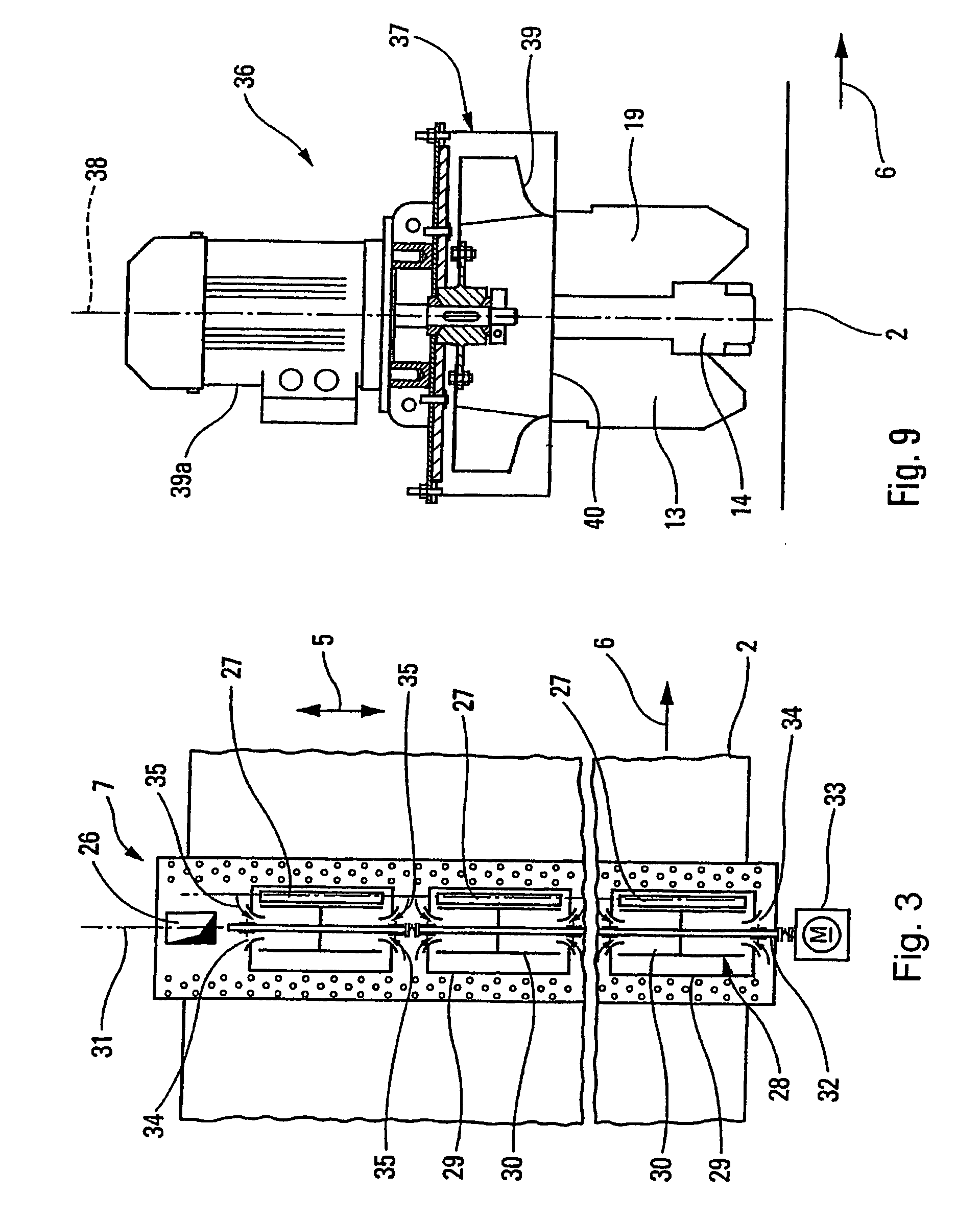Drier installation for drying web
a drying web and installation technology, applied in drying machines with progressive movements, lighting and heating apparatus, furniture, etc., can solve the problems of considerable loss of thermal energy, etc., and achieve the effects of reducing investment and operating costs, reducing mechanical energy consumption, and reducing thermal energy loss
- Summary
- Abstract
- Description
- Claims
- Application Information
AI Technical Summary
Benefits of technology
Problems solved by technology
Method used
Image
Examples
Embodiment Construction
[0044]FIGS. 1 and 2 represent a drier installation 1 for a passing web 2, more particularly paper, e.g. for a web of coated paper that has been treated in a humid way and has to be dried without contact.
[0045]The installation 1 comprises, on the one hand, of at least the web 2, the gas-heated radiant elements 3, arranged according to at least one row 4 stretching out in the transversal direction, schematised by the arrow 5, of the web 2 substantially over the entire maximum web width of the web 2.
[0046]The installation 1 also comprises, downstream of at least one row 4 of radiant elements 3, referring to the direction of the passing of the web, schematised by the arrow 6, that also represents the longitudinal direction of the said web 2, at least one convective transversal system 7 including suction and blowing devices, schematised in 8, to suck at least a part of the combustion products generated by the radiant elements 3 and to blow the said part of the combustion products towards...
PUM
 Login to View More
Login to View More Abstract
Description
Claims
Application Information
 Login to View More
Login to View More - R&D
- Intellectual Property
- Life Sciences
- Materials
- Tech Scout
- Unparalleled Data Quality
- Higher Quality Content
- 60% Fewer Hallucinations
Browse by: Latest US Patents, China's latest patents, Technical Efficacy Thesaurus, Application Domain, Technology Topic, Popular Technical Reports.
© 2025 PatSnap. All rights reserved.Legal|Privacy policy|Modern Slavery Act Transparency Statement|Sitemap|About US| Contact US: help@patsnap.com



